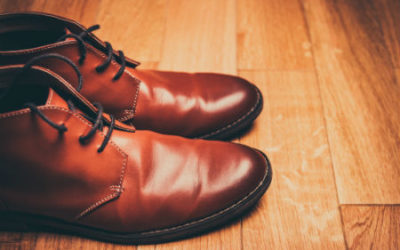Fashion is all about colour, cut, fabrics and patterns. If you’re a Spanish-English fashion translator, you’re sure to have come across some confusing terms, especially for suits and tailoring. Translating Spanish-English patterns and fabrics can be particularly confusing sometimes. To help you out, here’s our guide to some of the terms you’ll need. Read on for your introduction to Spanish-English fabrics and patterns.
Materials
Most men’s suits are made of wool (lana), cotton (algodón), linen (lino) and sometimes silk (seda). Wool is the most popular and can be spun into many different cloths, such as tweed (Spanish also uses tweed). Common wool types include cashmere (cachemir) and merino wool. For more extravagant suits, you’ll also come across velvet (terciopelo).
Weaves
How the material behaves and feels is down to the weave (hilatura). Weaving means how the individual threads are interlaced to make cloth. Other ways of producing textiles include knitting (punto), braiding (trenzado), crocheting (ganchillo) and felting (fieltro).
Weaving uses a loom (telar) to interlace threads together. There are three main types of weave: plain, twill, and satin.
Plain weave is the most basic, with the warp (urdimbre) and the weft (trama) threads forming a criss-cross pattern. If you’re writing about tailoring, for shirts, you might come across poplin (popelin). It’s a plain weave of any type of material. You’ll often see it in reference to cotton (algodón). The weave forms a square pattern, and it’s strong, flat and doesn’t wrinkle easily.
End-on-end (fil a fil) is a poplin weave where the weft thread is one colour and the warp thread another. It looks like one colour until you get up close.
Similar to poplin are Oxford (the same in Spanish) and pinpoint (the same in Spanish). An Oxford weave uses multiple weft threads over the same number of warp threads. Sometimes a coloured weft thread is used with a white warp thread for a two-tone (bicolor) look. It’s a durable weave that’s popular for casual shirts.
Weaving means interlacing individual threads to make cloth.
In pinpoint (Spanish uses the English term), a single weft crosses two warp threads to create a pin-point look. It’s a cross between poplin and Oxford. Less formal than poplin but more formal than Oxford.
A twill (sarga) weave has a pattern of diagonal ribs created by passing the weft thread over the warp thread then under two or more warp threads to produce a diagonal or step pattern.
Twill creates a different front and back side, with the most pronounced pattern used on the visible side. Denim, gabardine, serge, and tweed are all twill weaves. Tweed (the same in Spanish) is a diagonal weave with a rough, woolly texture.
Satin, as its name suggests, has a glossy surface. The underside is dull. The warp threads go over many more weft threads than in twill, making it soft. Satin (raso or satén) weaves are usually made from silk, nylon or polyester.
In 1804 Joseph Marie Jacquard invented the Jacquard loom, which used punched cards to control which threads of coloured yarn would appear on the upper side of the cloth. With the Jacquard loom, very complex patterns were suddenly feasible, as well as tapestry-style effects. Often considered too ornate for men’s suits, although there are some, it’s common for more decorative clothes.
Wearing coloured pinstripes makes the pattern more informal.
Another woven fabric is flannel (franela). It has a soft feel and the surface is brushed (cepillado), also called napped, to create a soft touch. Flannel always used to be made of wool, but now cotton and synthetic fibres are more common.
Worsted fibres (lana plana), also woven, have a smooth surface with a matte finish. The fibres are combed so they all run in the same direction. Worsted fabrics can be made with different threads to create lightweight or heavier suits.
Categorising threads
I just mentioned that worsted wool is used in suits. If the suit is made of wool, you might find it described with an S number. What does an S number mean for wool? The S stands for Super and is followed by a number, like Super 110s. It refers to the fineness of the wool. The maximum diameter of the wool fibre is measured in micrometers. For everyday wear, you’d probably choose a Super 100s or Super 120s.
Patterns
Herringbone (espiga) is a weave with Vs running through it. Apparently, this looks like bones from a fish like herring. Spanish sees them more as ears of wheat and calls the weave espiga. The warp and weft threads can be the same or different colours.
Houndstooth (pata de gallo) is a distinctive twill based on a weave of four light and four dark threads in a check pattern.
Birdseye (ojo de perdiz) is a pattern where the fabric is woven to create little dots on a darker background. The circles are supposed to resemble a bird’s eye. It works well as a business suit.
What does an S number mean for wool? Share on XMore formal is the pinstripe (raya diplomática) with narrow, white or grey stripes. Wearing coloured pinstripes makes the pattern more informal. English calls a suit with wider gaps a chalk stripe, but Spanish seems to refer to both as raya diplomática.
Once you’ve got stripes, you can make checked prints (cuadros). The windowpane check (cuadro ventana) is a bit like a chalk stripe but with horizontal lines included. It creates a large bold check.
Related to checks are plaids (like tartan) and you might see references to Glen plaid or Glen check (príncipe de gales) which features small and large plaids in the same pattern.
I hope you’ve found this short introduction to fabrics and patterns interesting. For more information about suits and tailoring, don’t forget to read my article about the rise of personal tailoring in men’s fashion: “Spanish-English Fashion Translation: Personal Tailoring”. It’s got lots more information about men’s suits, from how they’re put together to the different types of lapels.
Keep an eye on the blog for more articles about terminology for Spanish-English fashion translation. To make sure you don’t miss out, sign up for our newsletter by clicking the box on the right. You’ll get a summary of all our latest posts and industry updates.




0 Comments